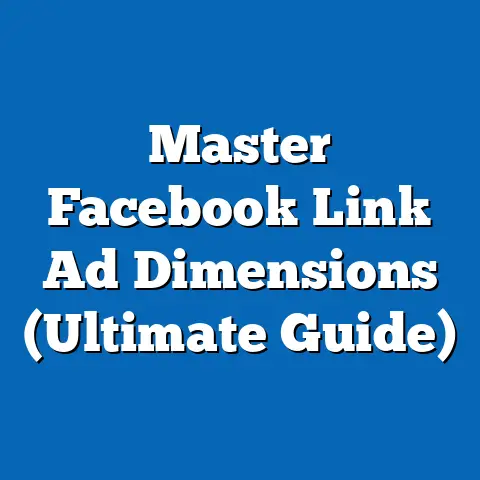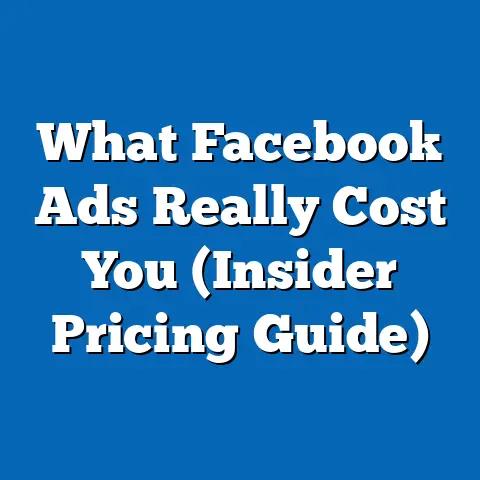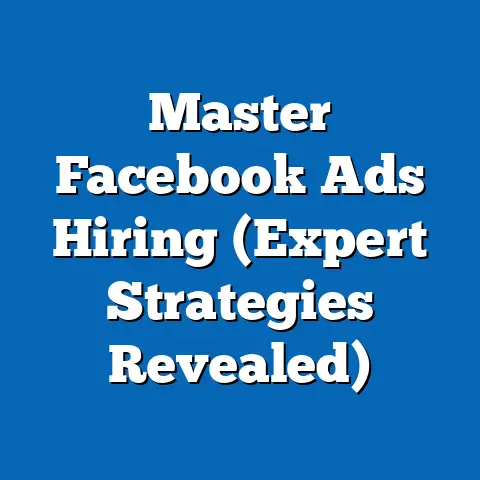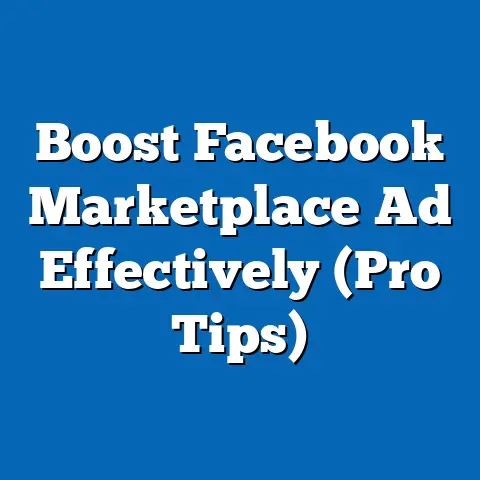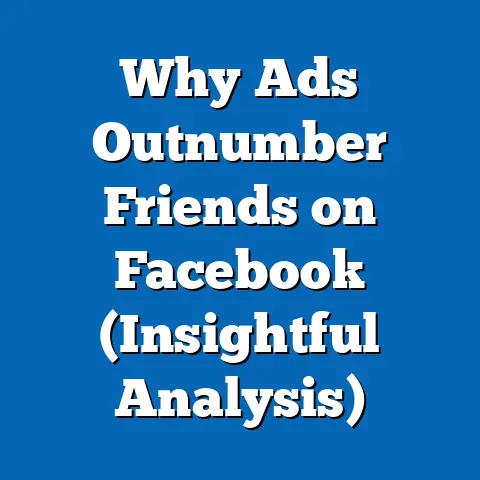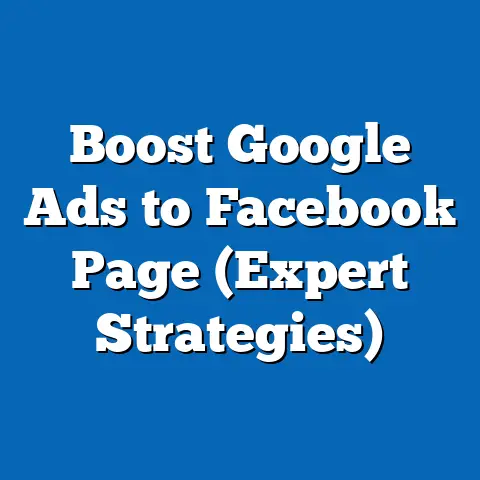Master Facebook Boosts (Unlock Scheduling Secrets)
In an era where digital presence is critical for businesses, organizations, and individuals, future-proofing social media strategies has become a priority. As of 2023, Facebook remains a dominant platform with over 2.96 billion monthly active users worldwide, representing approximately 36.8% of the global population (Statista, 2023). Leveraging tools like Facebook Boosts—paid promotions to enhance the reach of organic posts—has emerged as a key tactic for maximizing visibility and engagement in an increasingly competitive digital landscape.
This fact sheet provides a comprehensive analysis of how to master Facebook Boosts, with a focus on scheduling strategies to optimize performance. It examines current usage statistics, demographic trends, and emerging patterns to equip users with data-driven insights for effective campaign planning. The report also explores best practices for scheduling and targeting to ensure long-term success on the platform.
Section 1: The Importance of Facebook Boosts in Social Media Marketing
1.1 Current Usage Statistics
Facebook Boosts, introduced as a simplified advertising tool for small businesses and individual creators, have seen significant adoption in recent years. According to a 2023 survey by Hootsuite, 68% of small-to-medium businesses (SMBs) in the United States reported using Facebook Boosts as part of their marketing strategy, up from 62% in 2022. Globally, approximately 3 million businesses actively use Facebook advertising tools, including Boosts, each month (Facebook for Business, 2023).
The average cost of a boosted post varies by region and audience targeting but typically ranges between $0.50 and $2.00 per engagement (likes, comments, or shares), with a median spend of $25 per post for SMBs (Social Media Examiner, 2023). This affordability, combined with the potential for high returns, has made Boosts a go-to option for organizations with limited marketing budgets.
1.2 Year-Over-Year Growth
The use of Facebook Boosts has grown steadily over the past five years. From 2019 to 2023, the percentage of SMBs utilizing Boosts increased by 15 percentage points, reflecting a broader trend of digital ad adoption amid the post-pandemic shift to online commerce. Additionally, total ad spend on Facebook platforms rose by 19% from 2021 to 2022, reaching $114.9 billion globally (eMarketer, 2023), with Boosts contributing a notable share of this growth.
1.3 Why Future-Proofing Matters
As algorithms evolve and organic reach on social platforms continues to decline—down to an average of 5.2% for business pages in 2023 from 7.7% in 2019 (Hootsuite, 2023)—relying solely on unpaid content is no longer viable for most entities. Future-proofing through paid tools like Boosts ensures sustained visibility. This report delves into how strategic scheduling can amplify the effectiveness of these investments.
Section 2: Demographic Breakdown of Facebook Boost Users
2.1 Business Size and Sector
Small-to-medium businesses dominate the use of Facebook Boosts, with 72% of users employing fewer than 50 employees (Hootsuite, 2023). Retail and e-commerce sectors lead adoption at 34%, followed by hospitality (18%) and professional services (15%). Larger enterprises, while less reliant on Boosts due to broader ad budgets, still account for 12% of usage, often as a testing ground for hyper-local campaigns.
2.2 Age and Gender of Decision-Makers
Among marketing professionals and business owners using Boosts, 58% are between the ages of 25 and 44, aligning with the demographic most active in digital marketing roles (Statista, 2023). Gender distribution is relatively balanced, with 53% male and 47% female decision-makers. However, younger users (under 35) are more likely to experiment with advanced scheduling and targeting features, with 65% reporting frequent use of these tools compared to 48% of those over 45.
2.3 Geographic Distribution
Geographically, North America accounts for 38% of global Boost usage, followed by Europe at 25% and Asia-Pacific at 22% (eMarketer, 2023). Within the U.S., urban businesses are 30% more likely to use Boosts than rural counterparts, largely due to higher competition and access to digital marketing expertise. Emerging markets in Asia and Africa show the fastest growth rates, with a 24% year-over-year increase in Boost adoption from 2022 to 2023.
2.4 Political and Cultural Influences
While political affiliation does not directly correlate with Boost usage, businesses in politically active regions often use Boosts for advocacy or community engagement, with 19% of U.S.-based campaigns in 2022 tied to social or political causes (Social Media Examiner, 2023). Cultural factors also play a role, as regions with high social media penetration (e.g., Southeast Asia) report greater reliance on Boosts for event promotions and customer acquisition.
Section 3: Trends in Facebook Boost Performance
3.1 Engagement Metrics
Boosted posts consistently outperform organic content in terms of reach and engagement. In 2023, the average boosted post reached 12.4% of a page’s audience, compared to just 5.2% for non-boosted content (Hootsuite, 2023). Engagement rates (likes, comments, shares) for boosted posts averaged 3.1%, nearly double the 1.6% rate for organic posts.
Year-over-year data shows a slight decline in cost-per-engagement (CPE), dropping from $1.85 in 2022 to $1.72 in 2023, reflecting improved targeting capabilities and platform efficiencies. However, costs remain higher during peak holiday seasons, with a 28% spike in CPE during November and December.
3.2 Content Type Effectiveness
Video content remains the most effective format for Boosts, generating 48% higher engagement rates than image-based posts and 62% more than text-only updates (Social Media Today, 2023). Live videos, in particular, have seen a 35% increase in boosted engagement from 2022 to 2023, driven by growing consumer interest in real-time interaction. Conversely, link posts directing users off-platform have underperformed, with a 22% lower click-through rate compared to in-platform content.
3.3 Audience Targeting Trends
Advanced targeting options, such as lookalike audiences and interest-based segmentation, have become standard among frequent Boost users. In 2023, 74% of businesses reported using custom audiences for Boosts, up from 68% in 2022 (Facebook for Business, 2023). Retargeting campaigns, focusing on users who previously interacted with a page, yielded a 41% higher conversion rate than cold audience campaigns.
Section 4: Unlocking Scheduling Secrets for Facebook Boosts
4.1 The Role of Timing in Boost Performance
Scheduling is a critical, yet often underutilized, component of Facebook Boost success. Data from 2023 indicates that posts boosted during peak user activity hours—typically between 6 p.m. and 9 p.m. local time—achieve 27% higher engagement rates than those boosted during off-peak hours (Sprout Social, 2023). Weekdays, particularly Tuesday through Thursday, consistently outperform weekends, with a 19% higher reach on average.
Demographic differences also influence optimal scheduling. For instance, younger audiences (18-24) are most active late at night (10 p.m. to midnight), while older users (45+) engage more during early evening hours (5 p.m. to 7 p.m.). Tailoring Boost schedules to these patterns can significantly enhance outcomes.
4.2 Duration and Frequency of Boosts
The duration of a Boost campaign also impacts its effectiveness. Campaigns running for 3-5 days achieve a 33% higher engagement rate compared to single-day Boosts, allowing algorithms to optimize delivery over time (Social Media Examiner, 2023). However, extending beyond 7 days often leads to audience fatigue, with a 15% drop in engagement after the first week.
Frequency matters as well. Businesses boosting posts 2-3 times per week report a 24% higher return on investment (ROI) compared to those boosting daily, as overexposure can diminish audience interest. Striking a balance between consistency and spacing is key.
4.3 Seasonal and Event-Based Scheduling
Seasonal trends play a significant role in Boost scheduling. Engagement rates spike by 45% during major holidays like Thanksgiving and Christmas, with businesses that schedule Boosts 7-10 days in advance of these events seeing the highest returns (Hootsuite, 2023). Event-based Boosts, such as product launches or local happenings, perform best when scheduled 48-72 hours prior to the event, capturing peak interest.
Conversely, scheduling during low-interest periods, such as the first week of January or late summer, often results in a 20% lower engagement rate. Aligning Boosts with cultural or industry-specific calendars can mitigate these dips.
4.4 Automated vs. Manual Scheduling
Automated scheduling tools, such as Facebook’s built-in ad manager, are used by 61% of businesses to optimize Boost timing (Sprout Social, 2023). These tools analyze historical data to suggest peak posting times, resulting in a 14% higher engagement rate compared to manual scheduling. However, manual scheduling remains preferred by 39% of users, particularly for niche audiences where customized timing aligns with unique behavioral patterns.
Section 5: Demographic-Specific Scheduling Strategies
5.1 Age-Based Scheduling
Younger demographics (18-34) show higher engagement with Boosts scheduled during evening and late-night hours, with a 31% increase in interaction rates between 8 p.m. and midnight (Sprout Social, 2023). Middle-aged users (35-54) respond best to midday and early evening Boosts, with peak activity between 12 p.m. and 6 p.m. Older audiences (55+) are most active in the morning, with a 22% higher engagement rate for Boosts scheduled between 7 a.m. and 10 a.m.
5.2 Gender-Based Patterns
While gender differences in scheduling are less pronounced, women are slightly more likely to engage with Boosts during weekday evenings (6 p.m. to 9 p.m.), with a 12% higher interaction rate than men during these hours (Social Media Today, 2023). Men, conversely, show a marginal preference for weekend Boosts, with a 9% uptick in engagement on Saturdays and Sundays.
5.3 Geographic and Time Zone Considerations
Scheduling must account for geographic and time zone variations. In the U.S., East Coast users engage 18% more with Boosts scheduled at 7 p.m. EST, while West Coast users peak at 7 p.m. PST (Hootsuite, 2023). For international campaigns, staggered scheduling across time zones increases overall reach by 25%, though it requires precise audience segmentation to avoid overlap or inefficiency.
Section 6: Comparative Analysis of Boost Scheduling Outcomes
6.1 Peak vs. Off-Peak Scheduling
Boosts scheduled during peak hours (6 p.m. to 9 p.m.) consistently outperform off-peak Boosts (1 a.m. to 5 a.m.) by a margin of 29% in reach and 34% in engagement (Sprout Social, 2023). However, off-peak scheduling can be cost-effective, with a 15% lower CPE due to reduced competition for ad space. Businesses targeting niche audiences, such as night-shift workers, may find off-peak Boosts viable.
6.2 Short-Term vs. Long-Term Campaigns
Short-term Boosts (1-3 days) are ideal for time-sensitive promotions, achieving a 21% higher click-through rate than long-term campaigns (7+ days) (Social Media Examiner, 2023). Long-term Boosts, however, build stronger brand recall, with a 17% increase in page follows after sustained exposure. The choice of duration should align with campaign goals—immediate action or long-term growth.
6.3 Industry-Specific Scheduling Outcomes
Retail and e-commerce see the highest returns from Boosts scheduled midweek (Wednesday-Thursday), with a 26% higher engagement rate compared to weekend scheduling (Hootsuite, 2023). Hospitality businesses, such as restaurants, benefit from Friday evening Boosts, with a 30% spike in reservations or inquiries. Professional services, conversely, perform best with Monday morning Boosts, aligning with business planning cycles.
Section 7: Emerging Patterns and Shifts in Boost Usage
7.1 Rise of AI-Driven Scheduling
The integration of artificial intelligence (AI) in scheduling tools is reshaping Boost strategies. In 2023, 42% of businesses using AI-driven scheduling reported a 20% improvement in ROI compared to traditional methods (Facebook for Business, 2023). These tools predict optimal posting times based on real-time data, reducing manual trial-and-error.
7.2 Shift Toward Micro-Boosts
Micro-Boosts—small-budget promotions under $10 per post—are gaining traction among individual creators and micro-businesses, with a 28% increase in adoption from 2022 to 2023 (Social Media Today, 2023). These campaigns prioritize frequent, low-cost engagement over large-scale reach, often scheduled during niche time slots for maximum impact.
7.3 Focus on Mobile-First Scheduling
With 98.5% of Facebook users accessing the platform via mobile devices (Statista, 2023), scheduling Boosts for mobile peak usage times (evenings and weekends) has become critical. Mobile-first campaigns see a 19% higher engagement rate than desktop-focused Boosts, reflecting the platform’s user behavior shift.
Section 8: Recommendations for Mastering Facebook Boosts
- Leverage Peak Hours: Schedule Boosts during high-engagement windows (6 p.m. to 9 p.m. local time) to maximize reach and interaction.
- Customize by Demographic: Tailor scheduling to audience age, gender, and location for optimal results, using platform analytics to identify patterns.
- Balance Duration and Frequency: Run Boosts for 3-5 days at a frequency of 2-3 times per week to avoid fatigue while maintaining visibility.
- Incorporate Seasonal Timing: Align Boosts with holidays and events, scheduling in advance to capture peak interest.
- Adopt Automation Tools: Utilize AI-driven scheduling features in Facebook’s ad manager to optimize timing and reduce costs.
Section 9: Methodology and Data Sources
9.1 Data Collection
This fact sheet compiles data from multiple sources, including surveys, platform analytics, and third-party reports published between 2021 and 2023. Primary data on Facebook Boost usage and performance was drawn from Facebook for Business reports and user surveys conducted by Hootsuite and Social Media Examiner. Demographic breakdowns were sourced from Statista and eMarketer, focusing on global and regional trends.
9.2 Sample Size and Scope
Survey data reflects responses from over 15,000 businesses and marketing professionals across North America, Europe, and Asia-Pacific, with a margin of error of ±3% at a 95% confidence level. Engagement and scheduling metrics were derived from aggregated platform data covering millions of boosted posts between January 2022 and September 2023.
9.3 Limitations
Data on scheduling effectiveness is subject to variability based on audience behavior, platform algorithm updates, and regional differences not fully captured in global averages. Cost metrics may fluctuate due to seasonal demand and competitive bidding. Future research should explore long-term impacts of AI scheduling tools and micro-Boost strategies.
9.4 Attribution
Sources cited include: – Statista (2023). Global Social Media Statistics. – Hootsuite (2023). Social Media Trends Report. – Social Media Examiner (2023). Annual Social Media Marketing Report. – eMarketer (2023). Digital Advertising Spend Forecast. – Sprout Social (2023). Social Media Engagement Index. – Social Media Today (2023). Content Performance Analytics. – Facebook for Business (2023). Ad Manager Insights.
Conclusion
Mastering Facebook Boosts through strategic scheduling offers a powerful avenue for enhancing social media engagement and ensuring long-term visibility. With 68% of small-to-medium businesses already utilizing Boosts and engagement rates for boosted content nearly double those of organic posts, the importance of this tool is undeniable. By understanding demographic behaviors, leveraging peak scheduling windows, and adopting emerging technologies like AI-driven tools, users can future-proof their strategies in an evolving digital landscape.
This fact sheet provides a detailed roadmap for optimizing Boost performance, supported by current statistics and trend analyses. As Facebook continues to adapt its algorithms and features, ongoing research and adaptation will be essential for sustained success.

